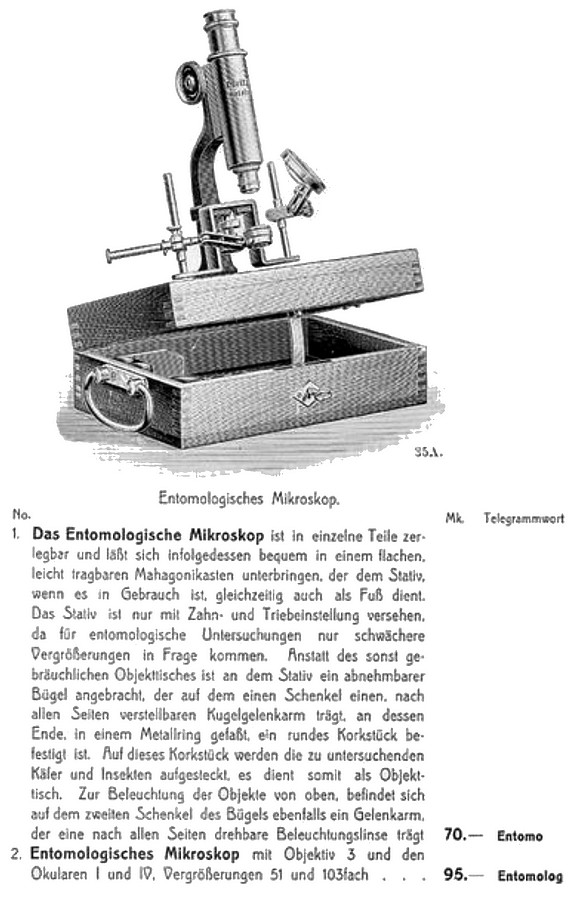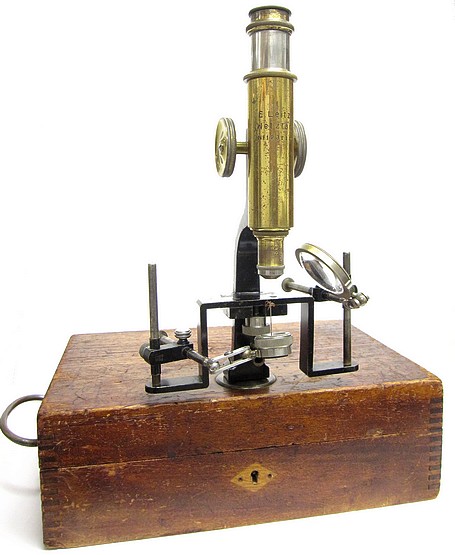
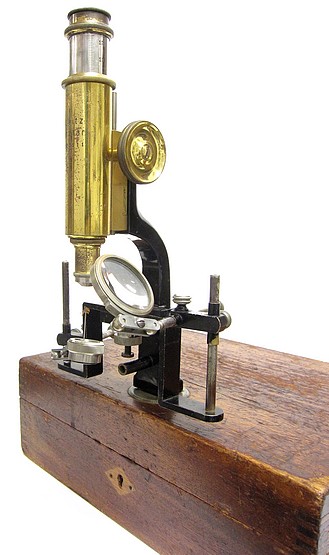
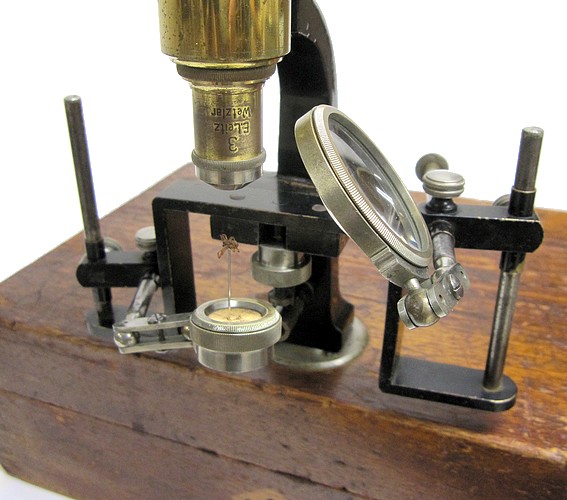
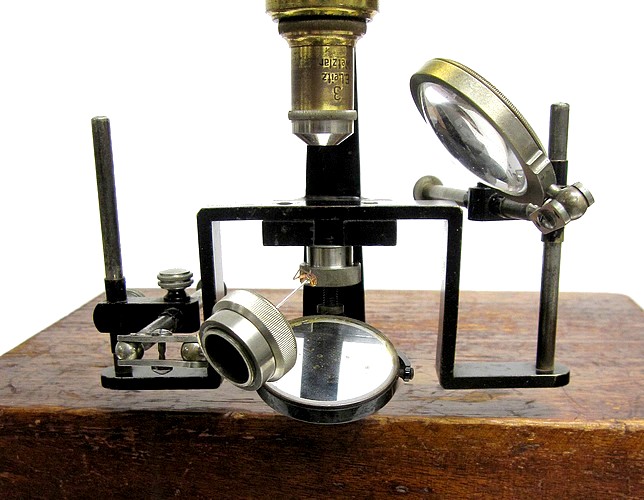
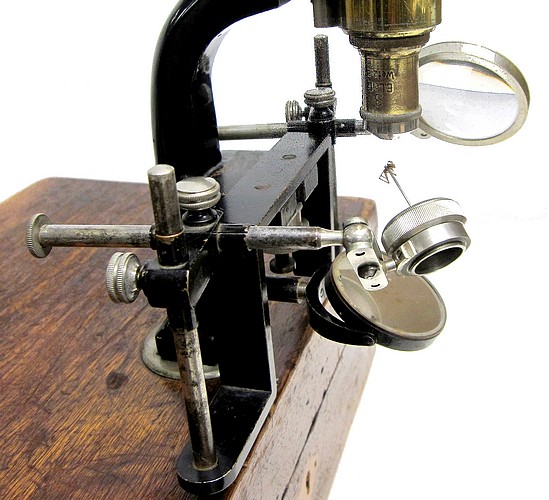
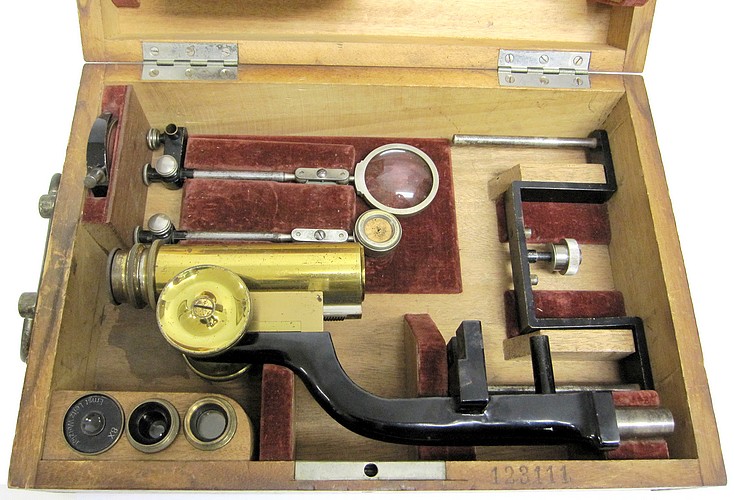
This is a specialized and uncommon microscope. It is signed on the tube E. Leitz, Wetzlar, No. 123111. On the basis of the serial number, it can dated to 1909. It is an example of an entomologist's field microscope. The storage case serves as the base of the microscope. The microscope focuses by rack and pinion. In use, the insect specimen is pinned to a cork which is held in a nickel plated holder attached to an articulated arm. The height and orientation of the specimen can be varied at will. Also attached to another adjustable articulated arm is a bulls-eye condenser that allows the specimen to be illuminated from above. In addition, the microscope is supplied with a mirror allowing observation of the more transparent parts of the specimen (such as the wings). The microscope can be quickly dissembled for storage in the case.
The following was extracted from the 1913 Leitz catalog:
